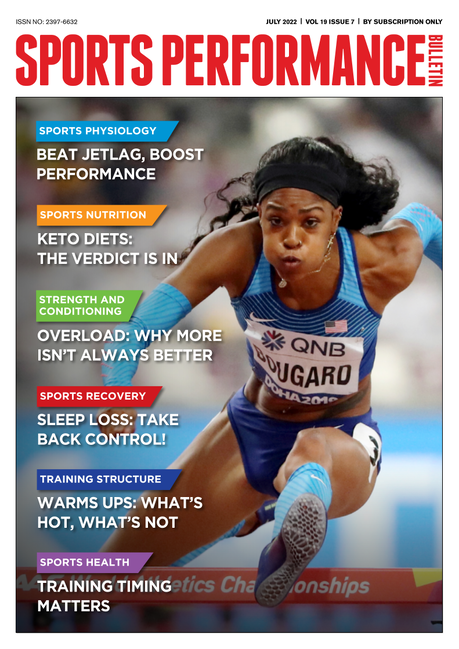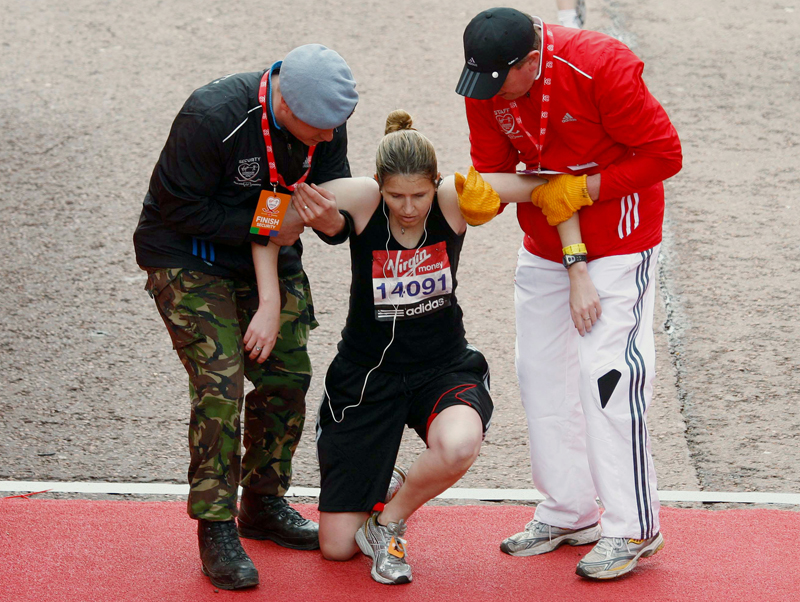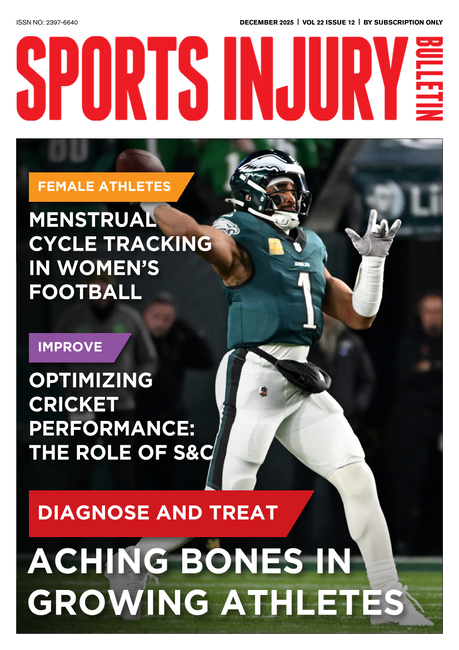Female athletes: dark secrets for better performance!

Most people regard chocolate as a junk food, but scientists who have been researching cocoa products – in particular dark chocolate containing 70% or more cocoa solids and relatively little added sugar - say otherwise. It turns out that the humble cocoa bean is a very rich source of source of polyphenol and flavanol antioxidants, which are known to help reduce the incidence of various degenerative diseases, especially cardiovascular disease(1). In particular, consuming high levels of flavanols in cocoa products can result in lower (and healthier) blood pressure levels(2) – a finding reflected in real-world observations from communities known to consume large quantities of flavanol-rich cocoa, and where cardiovascular disease is almost absent(3).
Cocoa, cardiovascular health and endurance
Many of the cardiovascular benefits (and potential performance benefits) arising from cocoa product consumption are believed to occur via improved blood flow - particularly through the micro-capillaries of muscle tissue - thanks to the flavanols present(4-7). Cocoa flavanols achieve this by stimulating an enzyme call ‘NO synthase’, which leads to high levels of nitric oxide (NO) synthesis. NO is a powerful blood vessel relaxant, enabling blood vessels to dilate (vasodilation), resulting in improved blood flow and reduced blood pressure.
Importantly, sports scientists have begun to explore these cocoa-meditated vasodilation effects in athletes to see if and how they might further enhance health and performance. In a study on (already very healthy) soccer players published last year, consuming 30 grams of dark chocolate per day resulted in improvements in blood cholesterol and blood lipid profiles and an improved gut flora (an important barometer for overall health and immunity)(8). Perhaps even more intriguingly, recent research has established that cocoa/dark chocolate can reduce ‘arterial stiffness’(9).
Reducing arterial stiffness
The arteries are the large vessels that deliver oxygenated blood all around the body. Healthy young arteries have elastic properties, which helps accommodate and reduce the blood pressure peaks produced by each heartbeat. As arteries age and as a result of poor diet and lifestyle, arteries tend to stiffen as the years pass by. The stiffer and harder the blood vessel walls, the more the heart has to work to pump blood into the arteries; in those with stiffer arterial walls only a small fraction of each cardiac stroke volume can be utilized for blood circulation without increasing the blood pressure. Reducing arterial stiffness with cocoa product consumption should therefore help muscle oxygenation and endurance performance.
In a recent SPB article, we looked at research on amateur runners confirming this is indeed the case(10). In this study 46 runners consumed 50 grams of 70% cocoa solid dark chocolate daily for two weeks. Before and after measurements on arterial stiffness showed that systolic brachial (measured in the arm) blood pressure reduced by 2.12%, diastolic by 2.79%. However, it was the performance improvements in the graded exercise test on the treadmill that most fascinated the researchers:
· Exercise time to exhaustion increased by 2.16%.
· Maximum heart rates achieved increased by 1.15%.
· Maximum oxygen uptake (VO2max) increased by 2.31%.
· The anaerobic threshold onset time as the exercise intensity increased by 6.91% (indicating more oxygen was available to the working muscles as the anaerobic threshold approached).
Cocoa and the female athlete
Although it’s a recent finding, it is now quite widely accepted among scientists that cocoa/dark chocolate ingestion can produce favourable physiological effects such as those described above, which in turn can enhance the physical performance of athletes. However, some scientists have speculated that for female athletes, there could be additional benefits from cocoa/dark chocolate ingestion. These benefits center on helping to ameliorate some of the negative effects of hormonal changes that occur during the monthly menstrual cycle.
It has long been known that the menstrual cycle is associated with a number hormonal and biochemical changes, and that when it comes to female athletes in training and competition, these changes can affect post-exercise recovery and athletic performance by exacerbating inflammation, pain sensitivity, and neuromuscular fatigue(11). In particular, elevated estrogen levels during the follicular phase of the cycle supports improved energy production and thermoregulation, while increased progesterone during the luteal and premenstrual phases is associated with reduced neuromuscular coordination, higher body temperature, substantial fatigue, and pain sensitivity(12,13). These cyclical effects explain why female athletes often experience variable performance outcomes depending on their hormonal state. Moreover, premenstrual syndrome (PMS), characterized by as mood swings, irritability, reduced cognitive function, and physical discomfort, can also significantly hinder training output(14).
Chocolate to the rescue?
Given the multitude of ways the menstrual cycle can impact on athletic readiness, various nutrition-based strategies - for example supplemental beetroot juice, omega-3 oils and whey protein - have been proposed to reduce post-exercise muscle damage and help improve recovery in female athletes(15,16). In this context, some researchers have proposed that dark chocolate, which is rich in cocoa-derived flavonoids, polyphenols, and micronutrients could be a promising functional food with ergogenic potential for female athletes(17). In addition, previous studies have investigated the potential of dark chocolate to alleviate menstrual pain and enhance physical or cognitive performance in trained women, which could be particularly relevant to athletes in hard training(18,19).
The problem is that very few studies have actually examined the impact of dark chocolate consumption on the physical and cognitive performance across the hormonal spectrum of the menstrual cycle in athletic women, particularly during the premenstrual phase of the cycle (the time after ovulation and before the start of the menstrual period, where many women experience physical and emotional symptoms). This premenstrual phase is often accompanied by increased inflammation, reduced neuromuscular efficiency, cognitive disruptions, and heightened pain sensitivity, which poses a substantial barrier to optimal training for female athletes. But given what we know about the physiological and metabolic effects, could dark chocolate supplementation help female athletes at certain points in the menstrual cycle?
New research
For an answer to the above question, we can turn to new research from a team of Iranian and Japanese scientists(20). Published in the journal ‘Nutrients’, this study set out to clarify whether the ingestion of cocoa in the form of dark chocolate can serve as a nutritional strategy to enhance athletic performance and psychological readiness in 15 trained female CrossFit athletes during hormonally challenging phases of the menstrual cycle. In particular, the researchers investigated the effects of 85% cocoa content dark chocolate supplementation on cognitive and physical performance, as well as delayed-onset muscle soreness (DOMS), in the athletes across the four distinct hormonal phases of the menstrual cycle:
· Menstrual
· Follicular
· Luteal
· Premenstrual syndrome (PMS)
These athletes had an average of three years competition experience, and all were pre-screened to ensure they had regular menstrual cycles. To ensure the findings were as rigorous as possible, the researchers designed the study as a ‘double placebo-controlled crossover study’. Double blinding means that neither the researchers nor the athletes knew whether they were ingesting dark chocolate or a placebo, and the crossover condition means that each athlete underwent a placebo and a dark chocolate intervention, which means that each athlete could serve as their own control.
What they did
The athletes were firstly split into three groups of five:
· Dark chocolate – where the athletes consumed 30 grams per day of 85% cocoa solid dark chocolate (Lindt Excellence) for three consecutive days at each of the four menstrual cycle phases of the first menstrual cycle, followed by a performance test day on the fourth day.
· Placebo - where the athletes consumed 30 grams per day of a visually, taste and calorically matched placebo chocolate containing less than 10% cocoa solids for three consecutive days at each of the four menstrual cycle phases of the first menstrual cycle, followed by a performance test day on the fourth day.
· Control – where the athletes consumed no supplement but underwent the performance tests on the fourth day of each menstrual cycle phase. The purpose of this group was to account for and eliminate the ‘placebo effect’ (see this article) in the study findings.
After the first whole menstrual cycle with testing during its four phases was complete, all the athletes underwent a 2-month washout period then switched groups where the whole procedure above was repeated for another menstrual cycle. Following a second 2-month washout period, the athletes switched groups again and repeated the procedure yet again. Overall, this meant that each of the 15 athletes was assessed in the dark chocolate condition, the placebo chocolate condition and the control condition.
How they tested the athletes
In each of the three conditions (dark chocolate, placebo, control) the athletes underwent testing and assessment during each of the four phases of their menstrual cycle. In each phase, the same protocol was used: three days of dark chocolate/placebo supplementation (nothing in the control condition) then on the fourth day, assessments were carried out. These were as follows:
· Performance assessment - using the CrossFit benchmark workout known as ‘Cindy’. This is a time-based workout that requires participants to complete as many rounds as possible in 20 minutes of the following sequence: 5 pull-ups, 10 push-ups, and 15 air squats.
· Assessment of delayed-onset muscle soreness (DOMS) - using a visual analogue scale. On this scale, a horizontal line of 100 mm is drawn, at the beginning of which the phrase is ‘painless’ and at the end of which the word is ‘severe pain’. The visual analogue scale gives a number that allows a person to express the severity of their pain and is used widely in experimental and clinical studies(21). The degree of DOMS was measured at baseline (before the Cindy test) then again at 0, 12, 24, 48, and 72 hours post-exercise.
· Handgrip strength test - a validated indicator of upper body isometric force and neuromuscular function, which was assessed using a calibrated hydraulic hand dynamometer.
· Reaction time and concentration task – this was determined by a Stroop task , which is a demanding mental task where participants have to continually distinguish between the actual color of the font in which a word describing a color appears on the screen and the meaning of the word.
Figure 1 below shows a schematic layout for the sequence of supplementation and testing through one of the three menstrual cycles assessed. Once all the athletes had been assessed in each condition over three menstrual cycles, the measurement data above was collected together and analyzed.
Figure 1: Experimental protocol shown for one menstrual cycle
You need to be logged in to continue reading.
Please register for limited access or take a 30-day risk-free trial of Sports Performance Bulletin to experience the full benefits of a subscription. TAKE A RISK-FREE TRIAL
TAKE A RISK-FREE TRIAL
Newsletter Sign Up
Testimonials
Dr. Alexandra Fandetti-Robin, Back & Body Chiropractic
Elspeth Cowell MSCh DpodM SRCh HCPC reg
William Hunter, Nuffield Health
Newsletter Sign Up
Coaches Testimonials
Dr. Alexandra Fandetti-Robin, Back & Body Chiropractic
Elspeth Cowell MSCh DpodM SRCh HCPC reg
William Hunter, Nuffield Health
Keep up with latest sports science research and apply it to maximize performance
Today you have the chance to join a group of athletes, and sports coaches/trainers who all have something special in common...
They use the latest research to improve performance for themselves and their clients - both athletes and sports teams - with help from global specialists in the fields of sports science, sports medicine and sports psychology.
They do this by reading Sports Performance Bulletin, an easy-to-digest but serious-minded journal dedicated to high performance sports. SPB offers a wealth of information and insight into the latest research, in an easily-accessible and understood format, along with a wealth of practical recommendations.
*includes 3 coaching manuals
Get Inspired
All the latest techniques and approaches
Sports Performance Bulletin helps dedicated endurance athletes improve their performance. Sense-checking the latest sports science research, and sourcing evidence and case studies to support findings, Sports Performance Bulletin turns proven insights into easily digestible practical advice. Supporting athletes, coaches and professionals who wish to ensure their guidance and programmes are kept right up to date and based on credible science.









